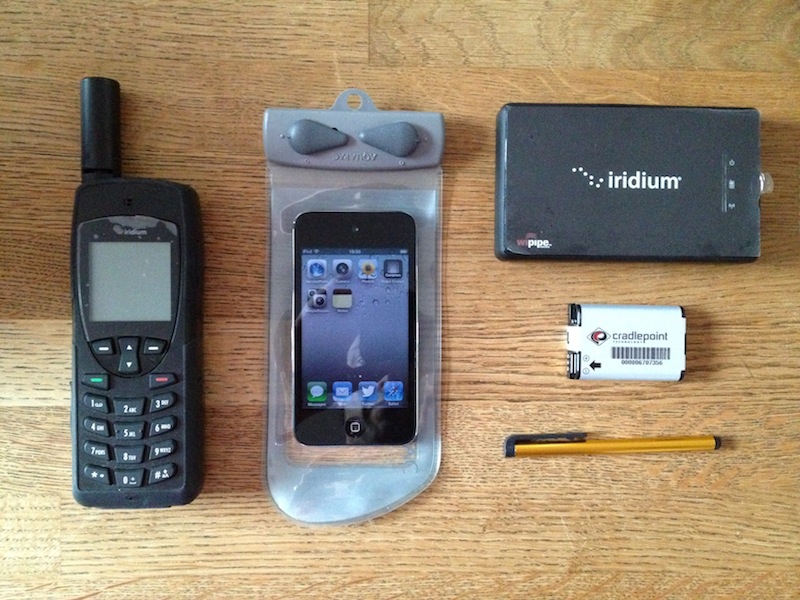Dark Ice Project communications
As my first major expedition, the 1374-mile The Long Haul in 2008 frustrated me for one reason in particular. Our budget was tighter than a tight thing on a tight day and our comms were limited to a daily SMS-length message to our blog. Proper accounts of our experiences, let alone photos and videos, had to wait until our return. Only four years on, this complete lack of real-time dialogue with the global audience is simply unthinkable now.
For the 2012-14 series of Dark Ice Project expeditions to the North Pole in winter, our plan is somewhat niftier. Here it is:
For public communication
A set-up combining an Iridium 9555 Satellite Phone pre-charged with large quantities of minutes and data (this total can be added to whilst on the ice) and standard and high capacity batteries, one always charged. An Iridium AxcessPoint wifi router (with rechargeable battery) connected to the phone by USB. This will then connect wirelessly with, wait for it, an iPod Touch 4th Gen which will remain inside a dehumidified (silica gel) pouch and be kept warm in a sleeping bag to be used in the mornings. The tiny bandwidth allowed by the Iridium satellites will be maximised by stripping everything from the iPod apart from the Iridium Web and Mail app, the camera app, Twitter and two apps to compress the size of photos and videos. Although high quality photos taken with the expedition's full-size camera will have to wait until the journey is over, images (and an occasional video) taken by the iPod Touch can be uploaded to our blog and Twitter without endless card-readers and cables. It will all be done in-iPod, edited and then uploaded along with our journal entries. Neat eh?
Apple devices have been routinely dismissed by expeditions because touchscreens perform poorly in the cold, large screens drain batteries and you can't use them with gloves on. We get around these problems by only using them after a night of body warmth, having a special stylus to tap the touchscreen and by using the iPod Touch in a low-power setting which combined with an excellent battery beats all the outdated options (like PDAs and separate cameras). Here's a rough idea of the set-up:
The dehumidified waterproof pouch is not to keep the iPod Touch dry from water as such but instead to stop condensation forming on the inside and outside of the device when it moves from a cold to a warm place and vice versa. It will be charged via a lithium AA-powered Apple charger.
If this system fails then SMS-length tweets can still be sent direct from the Iridium phone.
For safety
McMurdo Fastfind EPLB - a GPS-linked beacon to summon rescue in event of a major emergency.
Yellowbrick tracker - to make sure our hometeam know our exact location in the event of lost comms elsewhere. Our movement or lack of, shown over consequtive days, could give clues as to our status if satellite phones fail. A simplified track on a map of our progress will be shared online.
Backup Iridium 9555 Satellite Phone pre-charged with minutes and data. Standard and high capacity batteries, both always charged.
Over 800 lithium AA batteries to charge other batteries or power devices directly.
